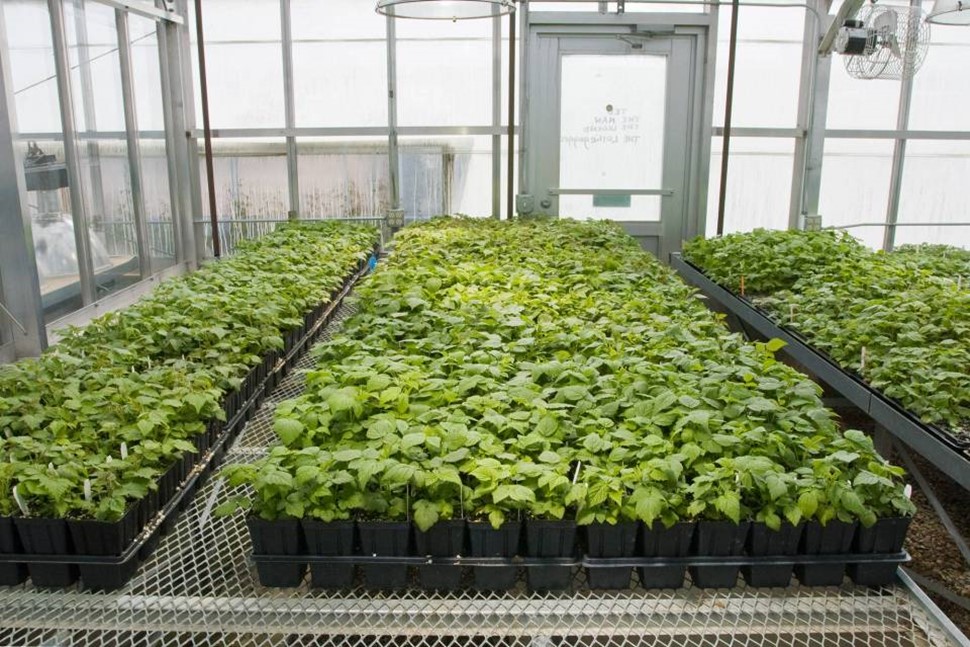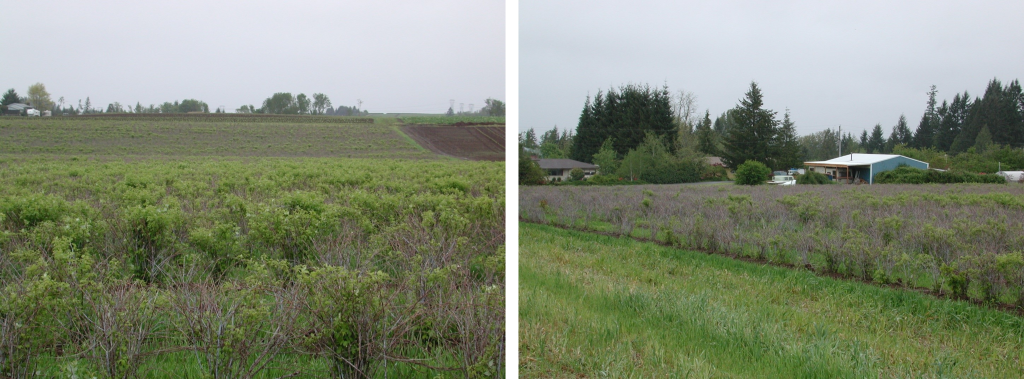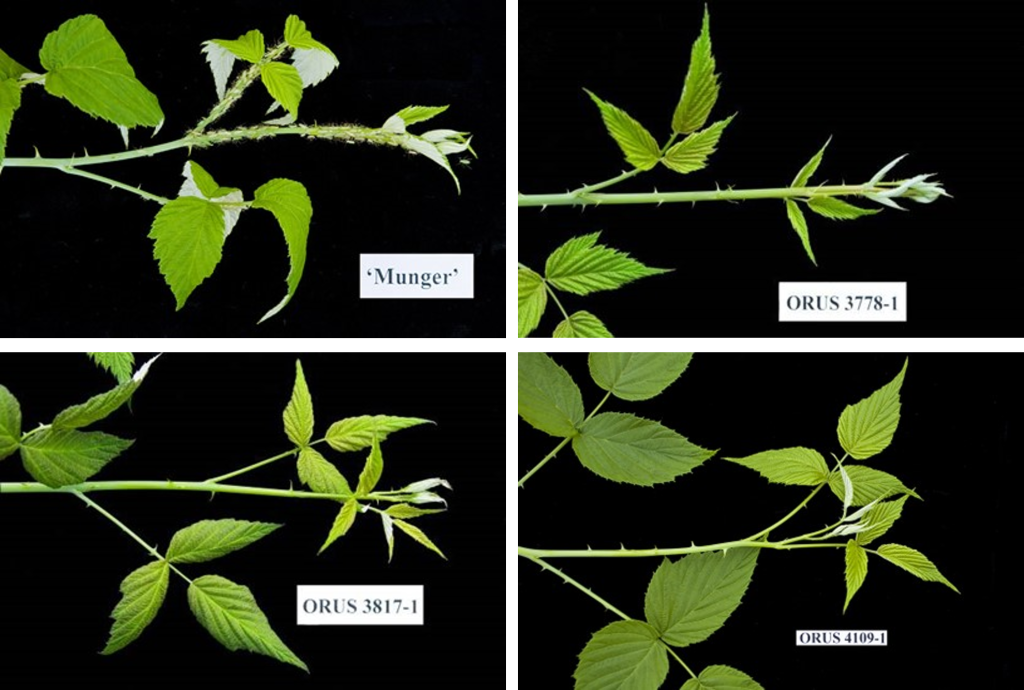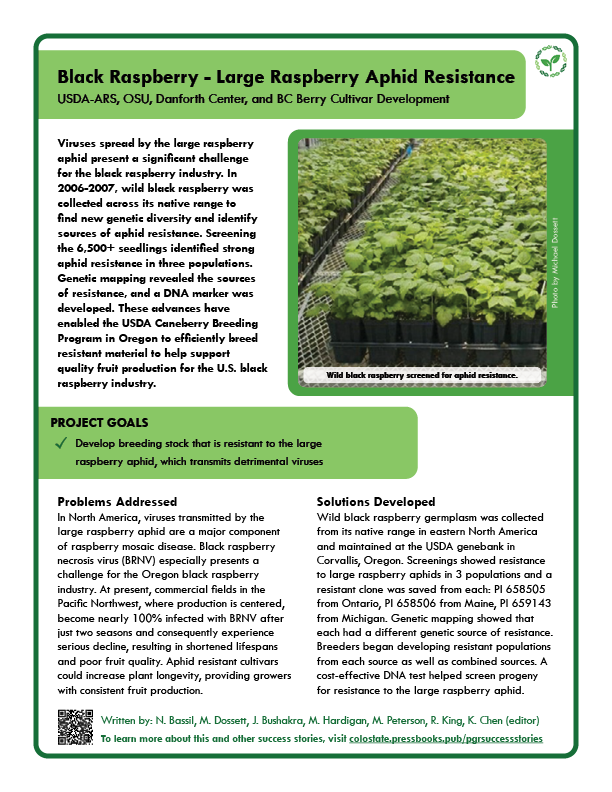Fruits and Nuts
Black Raspberry – Large Raspberry Aphid Resistance
From Germplasm to Breeding for Aphid Resistance in Black Raspberry
Nahla V. Bassil; Michael Dossett; Jill M. Bushakra; Michael A. Hardigan; Mary E. Peterson; and Ryan M. King
USDA-ARS National Clonal Germplasm Repository, 33447 Peoria Rd, Corvallis, Oregon 97333.
BC Berry Cultivar Development Inc., C/O 265 32160 S Fraser Way, Abbotsford, BC V2T 1W5, Canada.
USDA-ARS National Clonal Germplasm Repository, 33447 Peoria Rd, Corvallis, Oregon 97333.
USDA-ARS Horticultural Crops Production and Genetic Improvement Research Unit, 3420 NW Orchard Avenue, Corvallis, Oregon 97330.
USDA-ARS Horticultural Crops Production and Genetic Improvement Research Unit, 3420 NW Orchard Avenue, Corvallis, Oregon 97330.
USDA-ARS National Clonal Germplasm Repository, 33447 Peoria Rd, Corvallis, Oregon 97333.
Corresponding author: nahla.bassil@usda.gov
OUTLINE
- Summary
- Problems addressed
- Solutions developed
- Impact
- Germplasm
- Additional resources
- Chapter information
1. SUMMARY

In 2006 and 2007, wild black raspberry (Rubus occidentalis L.) germplasm was collected from its native range in eastern North America, which included 27 states and 2 Canadian provinces, to find new genetic diversity for breeding and to identify sources of resistance to the large raspberry aphid, Amphorophora agathonica (Hottes). More than 6,500 wild black raspberry seedlings from 132 wild populations, maintained by the USDA National Clonal Repository (NCGR) in Corvallis, Oregon, were screened for resistance to A. agathonica, which identified strong resistance in populations from Ontario, Maine, and Michigan. Genetic mapping identified that resistance is encoded by three separate but linked genetic factors. One DNA marker associated with the three areas of genetic resistance was developed to efficiently incorporate resistance into new breeding selections and potential cultivars of black raspberry in the USDA-ARS-Horticultural Crops Production and Genetic Improvement Research Unit Caneberry Breeding Program.
The goal of this project was to develop breeding stock that is resistant to feeding by the large raspberry aphid, which transmits viruses that cause shortened plant lifespan and small fruit size in black raspberry.
Download a printable fact sheet by clicking the image below.
2. PROBLEMS ADDRESSED

In North America, viruses transmitted by the large raspberry aphid are a major component of raspberry mosaic disease. One of these viruses, black raspberry necrosis virus (BRNV), presents a significant challenge for the Oregon black raspberry industry. At present, commercial fields in the Pacific Northwest, where production is centered, become nearly 100% infected with BRNV after just two seasons and consequently experience serious decline, resulting in a shortened lifespan and poor fruit quality of the infected plantings. New aphid resistant cultivars could increase the longevity of plantings, providing growers and processors with consistent fruit production of black raspberry.
3. SOLUTIONS DEVELOPED

Wild black raspberry germplasm was collected from its native range in 27 U.S. states and two Canadian provinces. Screening of this germplasm showed that all cultivars and most of the seedlings tested were susceptible to aphids; however, aphid-resistant seedlings were identified in 3 populations and a resistant clone was saved from each: ORUS 3778-1 (PI 658505) from Ontario, ORUS 3817-1 (PI 658506) from Maine, and ORUS 4109-1 (PI 659143) from Michigan.
To study the genetic control of resistance in these sources, populations were developed by separately crossing each of the sources of resistance to aphid-susceptible cultivars and screening the progeny for resistance. The ratio of resistant to susceptible progeny in these populations indicated a single gene from each of the sources, designated as Ag4, Ag5, and Ag6. The different sources of resistance were also crossed with each other to begin to develop lines carrying combined sources of resistance.
A reference genome was also developed and used to identify DNA markers for constructing genetic maps for each population. The genetic maps of genetically-variable populations identified three separate but linked genetic factors as responsible for the aphid resistance. A cost-effective DNA test that predicts resistance in seedlings using high-resolution melting (HRM) marker approach was developed and is now routinely used to identify black raspberry plants that carry aphid resistance.
Collaborators involved in developing solutions:
- USDA-ARS National Clonal Germplasm Repository, Corvallis, Oregon, USA
- USDA-ARS Horticultural Crops Research Unit, Corvallis, Oregon, USA
- BC Berry Cultivar Development Inc., Abbotsford, British Columbia, Canada
- Department of Horticulture, Oregon State University, Corvallis, Oregon, USA
- The Donald Danforth Plant Science Center, St. Louis, Missouri, USA
4. IMPACT
Incorporating aphid resistance into black raspberry breeding selections will result in improved cultivars with resistance to the large raspberry aphid. These cultivars could increase the longevity of black raspberry plantings, providing growers and processors with more consistent fruit production and less frequent field turnover, thereby increasing U.S. grower profits and reducing pesticide application.
5. GERMPLASM
Germplasm critical to this research is maintained by the National Clonal Germplasm Repository in Corvallis, Oregon–part of the U.S. National Plant Germplasm System (NPGS).
NPGS accession PI 658505 (ORUS 3778-1) is the seedling selection from the aphid-resistant wild population of Rubus occidentalis collected in Ontario, PI 653326 (ORUS 3778).
NPGS accession PI 658506 (ORUS 3817-1) is the seedling selection from the aphid-resistant wild population of Rubus occidentalis collected in Maine, PI 653347 (ORUS 3817).
NPGS accession PI 659143 (ORUS 4109-1) is the seedling selection from the aphid-resistant wild population of Rubus occidentalis collected in Michigan, ORUS 4109.
6. ADDITIONAL RESOURCES
Bushakra JM, Dossett M, Carter KA, Vining JK, Lee JC, Bryant DW, VanBuren R, Lee J, Mockler TC, Finn CE, Bassil NV. 2018. Characterization of aphid resistance loci in black raspberry (Rubus occidentalis L.). Molecular Breeding 38:83. https://doi.org/10.1007/s11032-018-0839-5
Bushakra J, Bryant D, Dossett M, Vining K, VanBuren R, Gilmore B, Lee J, Mockler T, Finn C, Bassil N. 2015. A genetic linkage map of black raspberry (Rubus occidentalis) and the mapping of Ag 4 conferring resistance to the aphid Amphorophora agathonica. Theoretical and Applied Genetics 128:1631-1646. https://doi.org/10.1007/s00122-015-2541-x
Dossett M, Finn CE. 2010. Identification of resistance to the large raspberry aphid in black raspberry. Journal of the American Society for Horticultural Science 135:438-444. https://doi.org/10.21273/JASHS.135.5.438
VanBuren R, Wai CM, Colle M, Wang J, Sullivan S, Bushakra JM, Liachko I, Vining KJ, Dossett M, Finn CE, Jibran R. 2018. A near complete, chromosome-scale assembly of the black raspberry (Rubus occidentalis) genome. Gigascience 7:giy094. https://doi.org/10.1093/gigascience/giy094
7. CHAPTER INFORMATION
Citation: Bassil NV, Dossett M, Bushakra JM, Hardigan MA, Peterson ME, King RM. 2025. Black Raspberry – Large Raspberry Aphid Resistance – Aphid Resistance. In: Volk GM, Chen K, Byrne P (Eds.) Plant Genetic Resources: Success Stories. Fort Collins, Colorado: Colorado State University. Date accessed. Available from https://colostate.pressbooks.pub/pgrsuccessstories/chapter/black-raspberry-large-raspberry-aphid-resistance/
Content originally submitted: March 18, 2025
Date of publication: May 27, 2025
USDA is an equal opportunity provider, employer, and lender. Mention of trade names or commercial products in this article is solely for the purpose of providing specific information and does not imply recommendation or endorsement by the U.S. Department of Agriculture.


